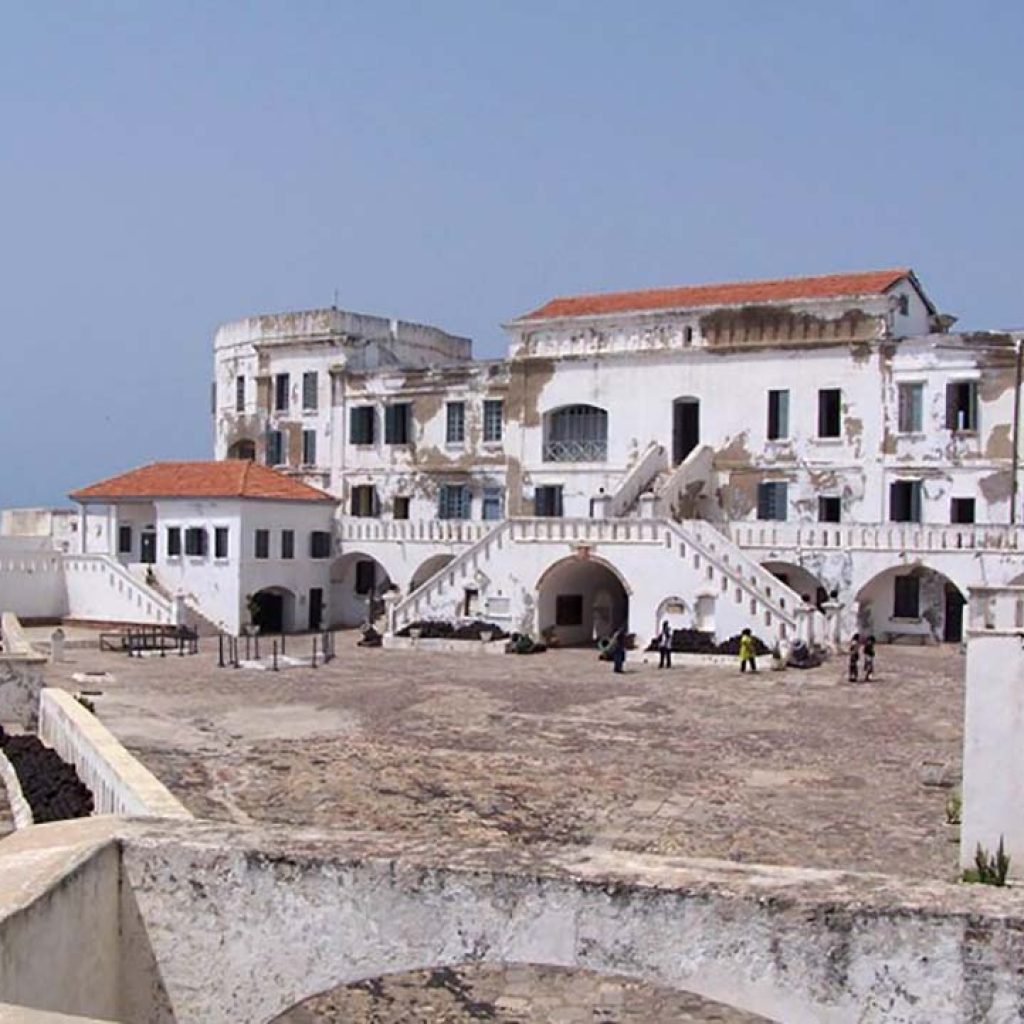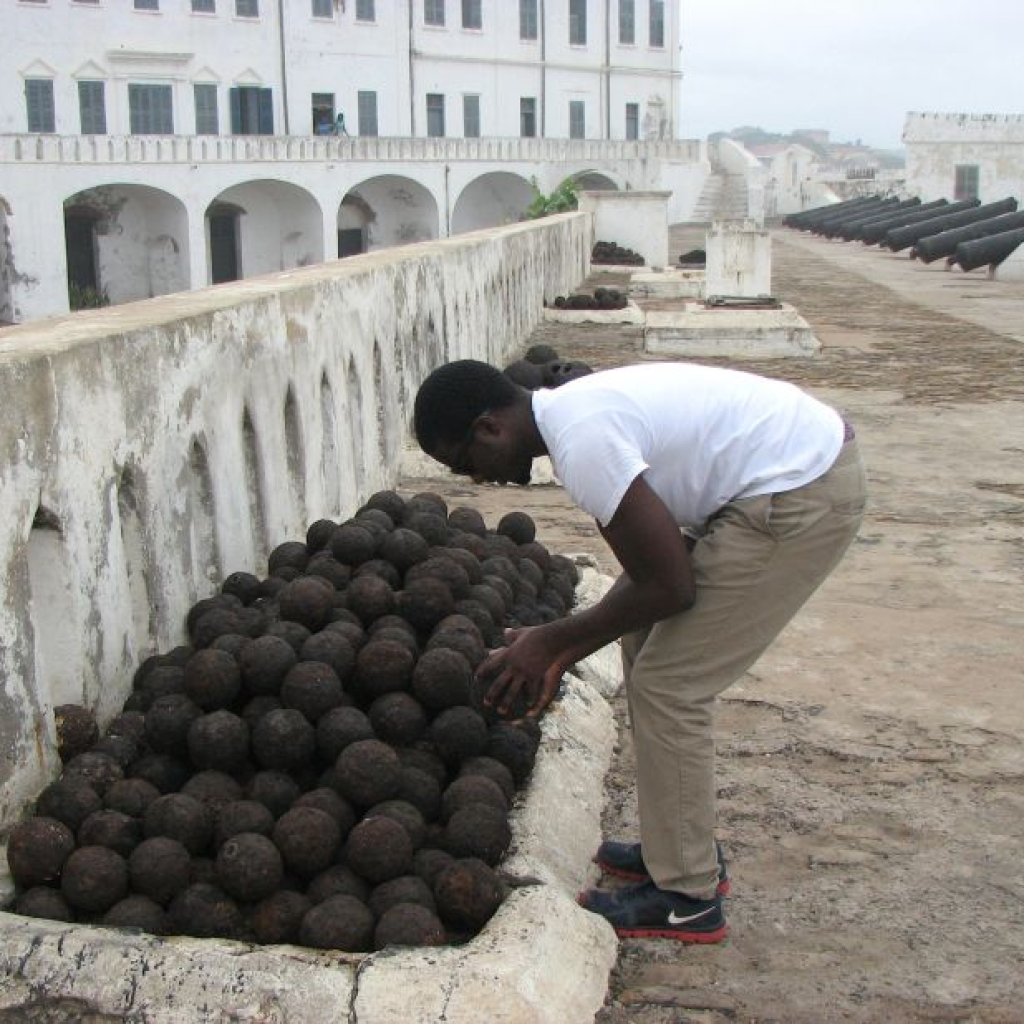The Cape Coast Castle is a big, strong building made by Europeans along the coast of Ghana. It is one of the largest and best-preserved castles that was used for the slave trade along the West African coast. and Its origins date back to 1555, when it started as a Portuguese trading post called Cabo Corso, which means “Short Cape It’s now a very important place, like a museum, recognized by UNESCO.
This castle, along with many others in Ghana, was important for trading gold and slaves. It’s also where Christianity first came to this area and where the first schools were started.
If you visit Cape Coast Castle with a guide, you’ll see interesting things like a tall tower called Dalzel Tower, dark rooms where slaves were kept, and big guns used to protect the castle. Inside, there’s a museum with old things from West African history, like drums, guns, chains used in the slave trade, and ancient pots.

History of the Cape Coast Castle
Originally, the castle was made of timber and constructed in 1653 by the Swedes, who named it Carolusborg in honor of their king, Charles X Gustav. However, it was later taken over by the Danish West India Company in 1657. There were several changes of ownership between the Danish, Dutch, and Swedes in the early 1660s. In 1664, the English captured the castle in a quick battle led by Captain Robert Holmes, renaming it Cape Coast Castle. The British controlled the castle until 1957.
The Company of Merchants, who were in charge of running the whole British colony, made big changes to the castle in 1699 and kept improving it over the 18th century. They made it bigger both on the land side and towards the sea, using materials from nearby and also bringing in stuff from England.
They had to make the castle bigger because the slave trade was getting larger. Between 1700 and 1807, almost all the business happening on the Gold Coast was related to the slave trade. Throughout the 18th century, the castle was like a big shop for the British slave trade. Many Africans, taken from faraway places, were brought to Cape Coast Castle to be sold to British ships.
In the meantime, Africans were kept in what the British called “slave holes” or dungeons at the bottom of the castle. These places had little air and no windows.
When the British stopped the transatlantic slave trade in 1807, most of the trade that happened on the Gold Coast became illegal, about 90%. Some people in Britain thought they should leave the African settlements, but in 1821, a law from Parliament said the British Crown would take control of the castle from the Company of Merchants.
The Castle became the main place for British control over the Gold Coast until 1877, but then they moved their main city to Accra. In the 1920s, the British fixed up the castle. Ghana became independent in 1957, and in 1974, they turned Cape Coast Castle into a museum.

The museum is open from 9:00 am – 4:30 p.m. daily
Entrance fees are as follows:
| CLASSIFICATIONS | GHS |
| Lower and Upper Primary | 5.00 |
| JHS Students | 6.00 |
| SHS Students | 6.00 |
| Tertiary Students and Volunteers with ID | 10.00 |
| Ghanaian Adult | 20.00 |
| Non-Ghanaian Lower & Upper Primary Students | 20.00 |
| Non-Ghanaian JHS/SHS with ID | 30.00 |
| Non-Ghanaian Tertiary Students / Volunteers with ID | 60.00 |
| Non-Ghanaian Adult | 80.00 |
*Entrance fees were reviewed on July 1, 2023.
In conclusion
Cape Coast Castle shows us how terrible the transatlantic slave trade was. It started as a place to trade goods, but it became a place where many people were bought and sold as slaves. This history is very sad and painful. Now, it’s a museum where we can learn about this dark time in history. When we visit, we’re encouraged to think about what happened and how it still affects us today. It’s a reminder to never forget and to work towards making things right


